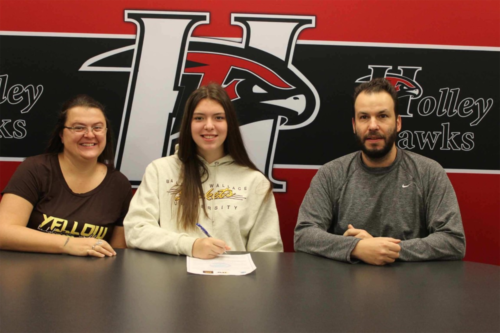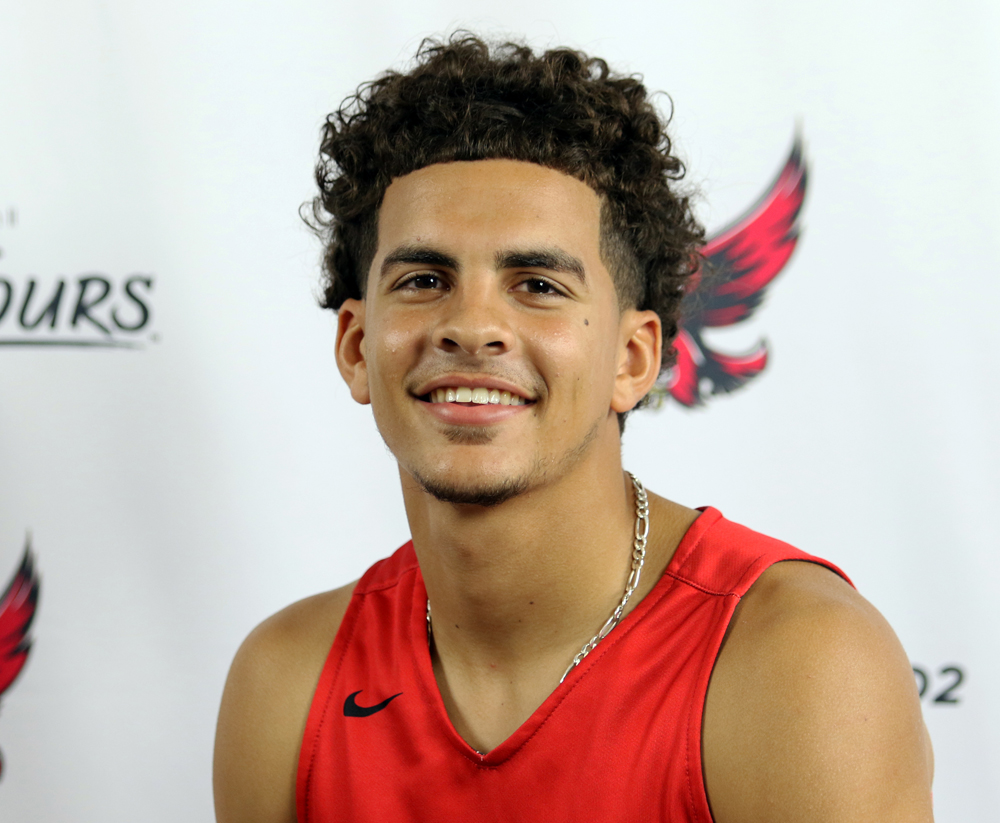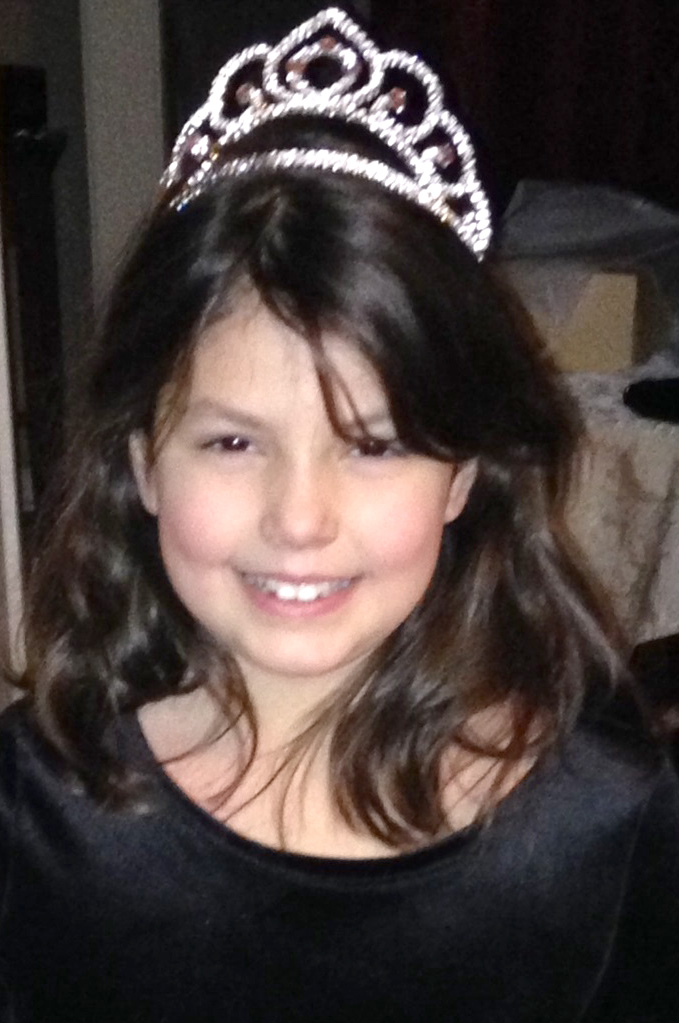Hoping to play a sport in college?
Two local athletes and one coach who have gone through the process offer suggestions

Many high school athletes dream of continuing their career at a two or four-year college or university, competing at the Division I, II, or III level. How do you get noticed? How do you avoid violating NCAA recruitment guidelines? How does the process usually work?
“There are NCAA protocols which must be followed,” Spencerport varsity wrestling coach Dan Glover said. “It has been my experience that coaches have reached out to coaches first.”
There are specific guidelines, which are sometimes different for a Division I school versus Division III or junior college. They are spelled out in detail on the NCAA website, http://www.ncaa.org/student-athletes/future/recruiting.
The process for some can begin as early as their freshman year of high school.
Churchville-Chili senior Patrick Mitchell recently committed to play men’s lacrosse for Division I Canisius College starting during the 2021-22 academic year.
“I knew I wanted to go to Canisius early on,” Mitchell said via email. “I attended their prospect camp and feel I had a really good day of play. Immediately after the camp, on the drive home, they reached out to me and told me they wanted to have me back for a visit. The following week, I visited the campus.
“I cannot stress this enough. If you know the few schools you may want to attend, it is a great idea to attend one of their camps. They do pay close attention and you get to hear from the coaches and players to get a sense of their vibe and program culture.”
Holley senior Kayleigh Neale also recently committed to play women’s soccer at Division III Baldwin Wallace University in Berea, Ohio, southwest of Cleveland.
“The coaching staff reached out to me after they saw me play in a tournament last February,” Neale said via email. “I was considering a few different colleges but over the summer I narrowed it down to two.”
There are strict regulations about how often and when a college coach or recruiter can contact a potential recruit. The NCAA guide refers to these as the Contact Period, the Evaluation Period, the Quiet Period, and the Dead Period.
An official campus visit paid for by a college or university is any visit with expenses covered by the college. An unofficial visit involves expenses paid for by the athlete’s family.
According to the NCAA guidelines: “During an official visit the college can pay for transportation to and from the college for the student-athlete, lodging and three meals per day for the student-athlete and his or her parents or guardians, as well as reasonable entertainment expenses including three tickets to a home sports event. The only expenses a college-bound student-athlete may receive from a college during an unofficial visit are three tickets to a home sports event.”
“I did go to campus for a visit,” Neale said. “While I was there, I had a meeting with an admissions counselor so I could learn more about the school and academics. After that, my parents and I went on a student-led tour of campus. Then we met with Coach Jim (Wojtkun) for a tour of the athletic facilities and had a meeting with him in his office.”
“I did do a campus visit,” Mitchell said. “Since Canisius is so close it was just a day visit. My parents and I attended a practice, met with the coaches (received my offer), and then coach took us on a facility and campus tour.”
What are college coaches looking for?
“In all my interactions with college coaches, the common thread has been character,” Glover summarized. “They are looking for athletes with outstanding credentials but more importantly the personal characteristics that will be an asset to their program and the college. Winning and statistics are a foundation for gaining attention from college coaches but certainly an athlete’s personal character, work ethic, and coachability is what separates them from the rest of the pack.
“Deal breakers that I have witnessed include a poor work ethic in the classroom and athletic realm.”
The NCAA also has strict regulations about needed high school GPA and SAT/ACT test results, and those requirements are different depending on the level of college competition.
Division I, for example, requires completion of 16 core high school courses (with specifications as to the subject breakdown), a 2.3 GPA along with test scores adding up to a sliding scale. “If you have a low test score, you need a higher core-course GPA to be eligible. If you have a low core-course GPA, you need a higher test score to be eligible,” the guidebook states.
Assuming a player being eligible and a coaching staff’s interest, there is then the process of choosing the school, program, and coaching staff that you believe is the best fit.
“I have a close friend who plays there now, so I have heard great things about the team, coaches, and the way they all get along,” Mitchell said. “It’s close enough for my parents to go see me play and they have a very strong program in the major I want.”
“I chose Baldwin Wallace because it felt like the best fit for me,” Neale said. “The academics are really great and I loved the campus and location. Baldwin Wallace also has a very welcoming environment. Everyone that I met has been extremely friendly and helpful and after I had the opportunity to meet some of the girls on the team, I knew it was where I wanted to be for the next four years.”
Mitchell had targeted Canisius, but also had interest from several other schools. The formal process was relatively short, “Literally nine days. I knew they were the school for me. They checked all the boxes in terms of what I wanted for lacrosse competition, education, and geographic location. Once I knew they wanted me to play for them it was an easy decision.”
Neale’s journey was quite a bit longer. “I first started communicating with college coaches the summer between my sophomore and junior year when I went to a few camps at schools I was interested in, so it was about a year and a half before I decided where I wanted to go.”
And finally, both athletes talked about any surprises they had during the process.
“The only real surprise during my process was COVID-19,” Neale said. “It’s made the process more difficult for a lot of people because of games and tournaments being canceled.”
“I think the biggest surprise is how many different ways there are to get onto a coaches’ radar,” Mitchell said. “For me, guest playing in a local tourney, word of mouth, Under-Armor games, attending a prospect camp, and tourneys with my club team, FCA Upstate, all led to contacts from coaches. Also, make sure you take time to have a highlight tape and somewhere a coach can find it. FCA did a subscription for all their players to have a page on Sports Recruits. It’s crazy the number of coaches that have relied on that to go view videos of players and help make a decision during these COVID times.”




